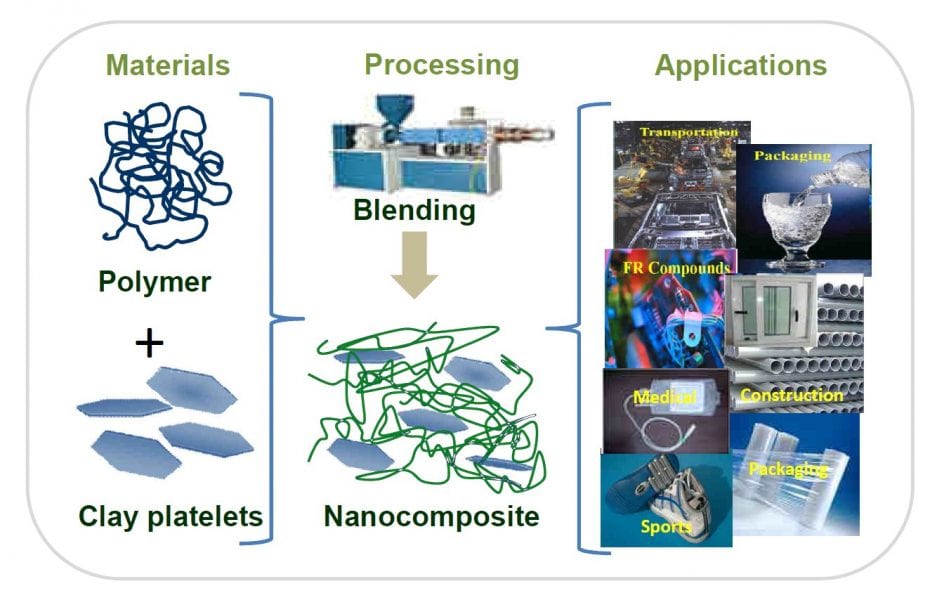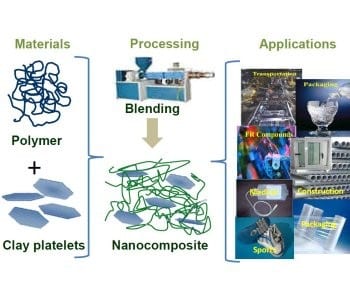 Clays are the oldest and potentially one of the most interesting and versatile nanofillers. The blending of surface-functionalized clay platelets with a polymer matrix can yield a new class of hybrid materials, commonly known as clay-containing polymer nanocomposites (PCNs), where 1-5 % (in general) clay particles by volume are molecularly dispersed within the polymer matrix. The dispersed clay particles can significantly improve the properties of the polymer matrix relative to those of a neat polymer matrix and can introduce new value-added properties.
Clays are the oldest and potentially one of the most interesting and versatile nanofillers. The blending of surface-functionalized clay platelets with a polymer matrix can yield a new class of hybrid materials, commonly known as clay-containing polymer nanocomposites (PCNs), where 1-5 % (in general) clay particles by volume are molecularly dispersed within the polymer matrix. The dispersed clay particles can significantly improve the properties of the polymer matrix relative to those of a neat polymer matrix and can introduce new value-added properties.
Over the last few years, researchers have made extraordinary progress in the practical processing and development of various products from different PCNs. The variation of the polymer matrix with different clay surface functionalities can lead to PCNs suited for a wide range of applications, including automobiles, construction materials, packaging, tissue regeneration, load-bearing scaffolds for bone reconstruction, and many more.
The present Trend Article by Suprakas Sinha Ray (National Centre for Nanostructured Materials, Pretoria, South Africa) focuses on recent research efforts in processing and characterization techniques, properties and applications, and key research challenges and future outlooks in the development of multifunctional PCNs.

















